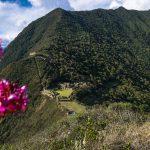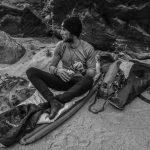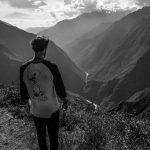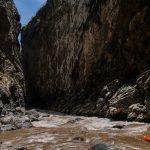The Abismo – the name you will often hear mentioned when you travel to kayak in Peru. It is the strongest multi-day section of the Apurimac River with a lot class 5 rapids, towering canyons and about six portages, which makes this section one of the most appreciated in Peru.
How to get there
If you are staying in Cusco, you have to rent a combi and leave early in the morning about 4:00 am to arrive early at the put in since it is approximately three hours away. The put in is in the Connoc hot springs, you can also enter the bridge but you will have to paddle an hour and a half of flat water. The take out is in Puente Pasaje is a large orange bridge where cars pass. Easy to see! To get to the put-in by combi costs approximately 300 soles. To get out of the take out you can rent a combi from Abancay where they will more or less will charge about 600 to 700 soles. The climb out is quite hard with a duration of approximately five hours of rise and three of descent and an entry price of 60 soles.
Water levels
The water levels are very variable depending on the rains … so the best what you can do is ask the local kayakers like Alonso (Rambito), Santiago Ibañez, Leonardo … they will tell you if its good to go! The best times to go to the Abismo are from the end of September to the beginning of December depending on when the rainy season starts.
Eating and sleeping
In the section of the Abismo there are many sandy beaches perfect for camping you just need to take a look when it is time to rest. The climate inside the gorge is hot, it depends on the section with some wind and normally it rains some of the nights so I recommend bring your tarp. In the final of the first day or beginning of the second you get to the Rosalindas bridge, there you can buy water and some chocolate (pretty expensive), it is also the entrance to the trail of Choquequirao a very beautiful Inca ruins and highly recommended to go, you just need to add an extra day to make it. On the way up there are small houses where to eat menus around 8 soles so you don’t need to take extra food.
Check back next time for the next in our series of short guides, the Chilca …



